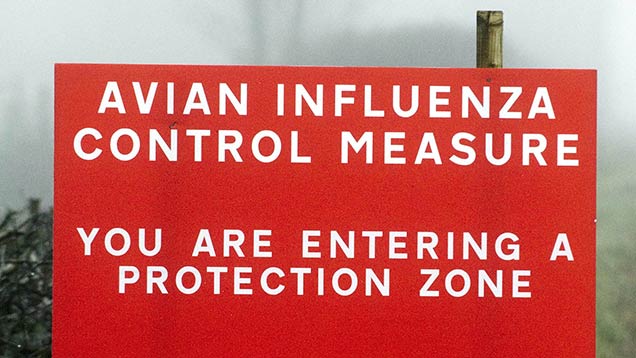Bird flu confirmed at duck farm in Yorkshire
 (c)Rex
(c)Rex Highly-pathogenic avian influenza has been confirmed on a duck breeding farm near Driffield in East Yorkshire
A 3km protection zone and a 10km surveillance zone were authorised by the secretary of state at 23.15pm on Sunday night.
See also: High path H5N8 bird flu hits German turkey unit
This requires the housing of all poultry or, if that is not possible, the complete separation of poultry farms from wild birds. Movement of all poultry and poultry products within these zones is controlled under licence.
It is understood that the farm involved belongs to Cherry Valley and the 6,000 birds have been culled already. There are other duck and poultry farms within the two zones that are now under close scrutiny.
The flu strain has been confirmed as H5 – high-pathogenic – but the N number is yet to be confirmed.
But the outbreak comes on the back of recent cases of the H5N8 strain in Germany and the Netherlands, which was until recently confined to South East Asia. These are believed to have been caused by migratory wild birds.
The Dutch case was confirmed over the weekend, and destruction of the 150,000 hens on the affected farm in the village of Hekendorp is already under way, according to media reports.
A statement from the Dutch government said the H5N8 strain could potentially affect humans, but only through very close contact with infected birds.
The BBC reports that the Dutch government has imposed a three-day national ban on the movement of poultry and eggs. The EU Commission is holding an emergency meeting to discuss the situation on Monday (17 November).
Maintaining a high level of surveillance of housed and wild birds in the UK is key to helping contain avian influenza once present, says the British Poultry Council..
“Wide and ongoing surveillance of housed and wild birds in the UK, particularly susceptible waterfowl species, is key,” said BPC chief executive, Andrew Large. “Avian influenza is a disease of birds and the risk to the general public is judged by health experts to be negligible.
“The rapid containment and culling of this outbreak has proved how effective partnership between government and the poultry sector can be. Defra, the other agencies involved and the industry have dealt with the situation in a rapid and effective way and the controls in place are proportionate to the risk poultry farmers face.”
A Defra spokesperson said a detailed investigation is ongoing. “We have a strong track record of controlling and eliminating previous outbreaks of avian flu in the UK,” she added.
How to spot avian influenza
The main clinical signs of high pathogenic AI in birds are:
- swollen head
- blue discolouration of neck and throat
- loss of appetite
- respiratory distress such as gaping beak, coughing, sneezing, gurgling or rattling
- diarrhoea
- fewer eggs laid
Low-pathogenic avian influenza (LPAI) is usually less serious. It can cause mild breathing problems, but affected birds will not always show clear signs of infection.

